 It’s a lovely warm afternoon and I’m stood holding a little lightweight box with two terminals …. It’s a fake, a toy, it has to be. This simply cannot be a real battery!
It’s a lovely warm afternoon and I’m stood holding a little lightweight box with two terminals …. It’s a fake, a toy, it has to be. This simply cannot be a real battery!
Some sleazebag once tried flogging me a wooden camcorder in bubble wrap at a French fuel station, luckily I rumbled him. I’m starting to have a sinking feeling, maybe I’ve been stitched up like a kipper this time. No way is this a battery, no siree Bob!
The thing is though, the Shorai LFX18A1-BS12* is indeed real, and yes, it does only weigh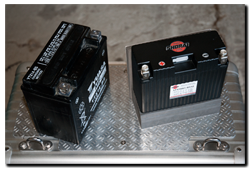 0.96Kg against the portly 4.6Kg that the YTX14 tips the scales at. It can weigh as little as a budgies fart and pack more punch than a high power version of the standard battery because of the lithium-Iron technology it uses, frankly it’s way over my head but if it works, I’m all for it. Here’s the bullet points the technology is supposed to offer:-
0.96Kg against the portly 4.6Kg that the YTX14 tips the scales at. It can weigh as little as a budgies fart and pack more punch than a high power version of the standard battery because of the lithium-Iron technology it uses, frankly it’s way over my head but if it works, I’m all for it. Here’s the bullet points the technology is supposed to offer:-
- Fraction of the weight of traditional batteries
- Faster cranking for better starting
- Faster charging
- No lead or explosive gasses
- Twice the service life
What’s in the box? Firstly, a neat carbon composite battery with a measured floating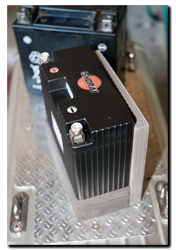 voltage of 13.36v – that’s about 90% charged, exactly what the website says it should be. The box also contains an instruction leaflet, stickers (ooo!!) and lots of adhesive backed foam strips to pad out the little darling to fit your battery bay nice and snug like. It only took a few minutes to match up the foam to pad out the Shorai to YTX14 dimensions, then ease it into the battery bay and begin reconnecting the cables. One nice touch is that all the terminal nuts have a piece of foam pre-attached to hold them in place and hence, make bolting the wires in much easier … a simple thing, but much appreciated!
voltage of 13.36v – that’s about 90% charged, exactly what the website says it should be. The box also contains an instruction leaflet, stickers (ooo!!) and lots of adhesive backed foam strips to pad out the little darling to fit your battery bay nice and snug like. It only took a few minutes to match up the foam to pad out the Shorai to YTX14 dimensions, then ease it into the battery bay and begin reconnecting the cables. One nice touch is that all the terminal nuts have a piece of foam pre-attached to hold them in place and hence, make bolting the wires in much easier … a simple thing, but much appreciated!
So the proof of the pudding, the first start. Nothing much to say really …. It started up nice and strong like it had always been there, absolutely amazing! It settled down to a normal 14.2v charge at idle and I left it for about 10 minutes and then turned the bike off. I went back the next morning and measured the floating voltage – 14.04v …… about 95% charged! So even in the few minutes I ran the bike, it had taken charge and dropped nothing overnight. This is looking promising!
The YTX14 that came out is about 3 years old and a quality make, but has started to show signs of distress over the past few weeks. So I think it fair to consider it life-expired and so use its cost/life as the yardstick with which to measure the Shorai unit.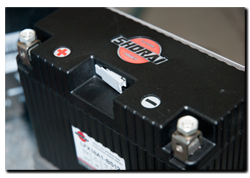
This then is day 1, I’ll write periodically over the coming months about its performance, especially on balance with the YTX14 it has replaced. Hopefully in the next few weeks I should be getting the Shorai SHO-BMS01 charger to use directly into the batteries own port and then I’ll see how it fairs in ‘storage mode’ for the winter period.
The Caponord (all years) can take either the standard fitment LFX14A1-BS12 or the higher powered LFX18A1-BS12, they are both the same case size.
UPDATE 2014
Shorai have now replaced the original battery model for the Caponord/Futura with the LFX21A6-BS12.
 Well it’s time to test out the prototype of the BMW-clone Dynamic Brake Light System ……… but how to keep an eye on the tail-light and hazards when riding around? Dig out a bit of scrap metal, the old Shorai battery and the Tarot 2D gimbal/GoPro camera combination – that’s how! 😀
Well it’s time to test out the prototype of the BMW-clone Dynamic Brake Light System ……… but how to keep an eye on the tail-light and hazards when riding around? Dig out a bit of scrap metal, the old Shorai battery and the Tarot 2D gimbal/GoPro camera combination – that’s how! 😀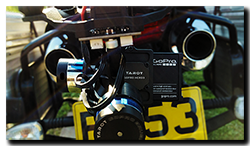 So now we’re ready to rock the highways and byways with the gimbal/GoPro hopefully grabbing the footage I need. Once it’s done I’ll turn the gimbal around and grab some more quirky footage facing backwards! 😯
So now we’re ready to rock the highways and byways with the gimbal/GoPro hopefully grabbing the footage I need. Once it’s done I’ll turn the gimbal around and grab some more quirky footage facing backwards! 😯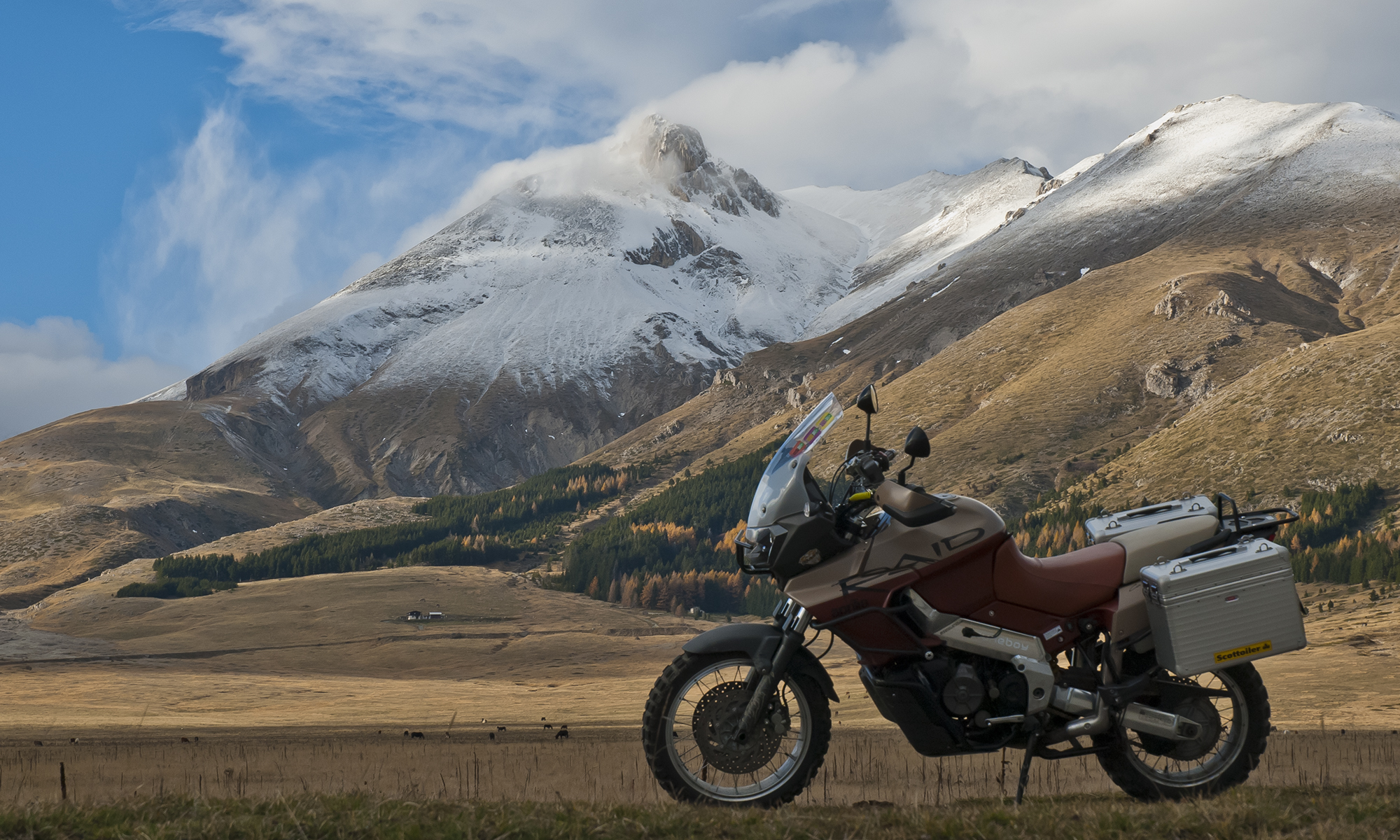
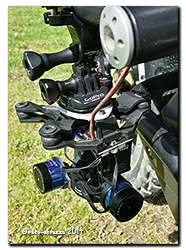
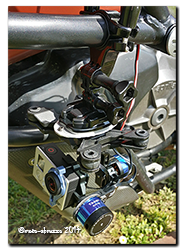
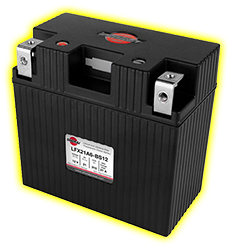 Just a quick post to update on Shorai batteries. As you may remember, I tried a
Just a quick post to update on Shorai batteries. As you may remember, I tried a 
 Let me start by saying that the Shorai is NOT a bad battery, it’s just not the right battery it seems for a large capacity V-twin.
Let me start by saying that the Shorai is NOT a bad battery, it’s just not the right battery it seems for a large capacity V-twin. 

